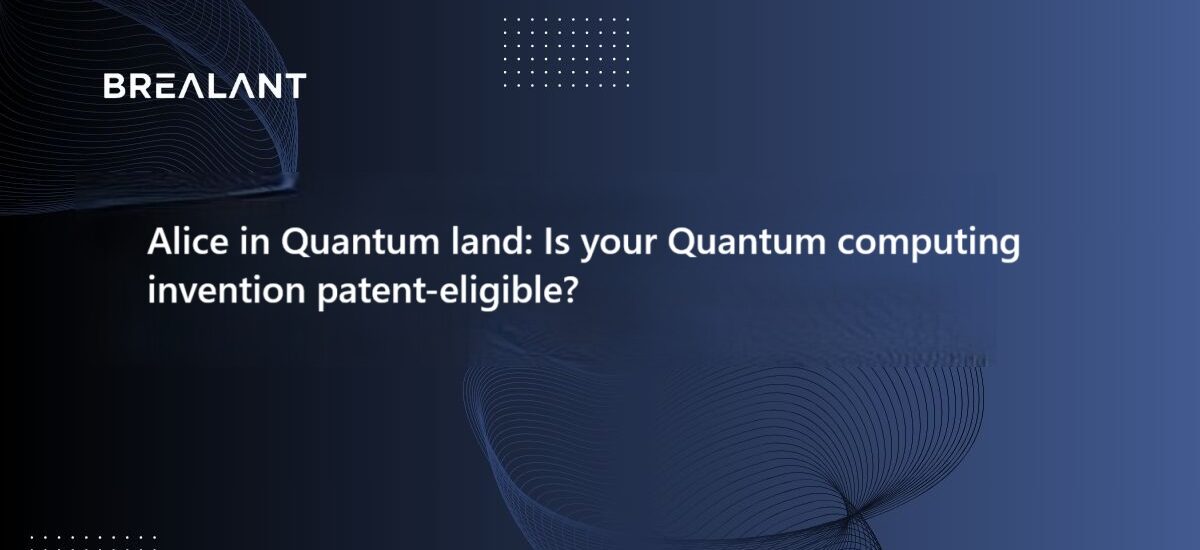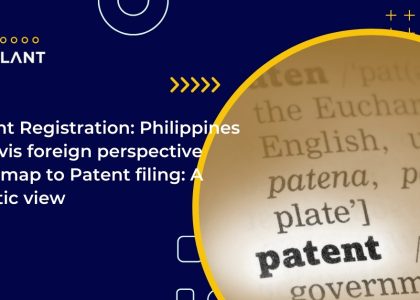

Alice in Quantum land: Is your Quantum computing invention patent-eligible?
The world of quantum mechanics has always been a realm of wonder, pushing the boundaries of our understanding of reality. Quantum computing has brought forth the promise of unparalleled computational power, potentially revolutionizing fields from cryptography to drug discovery. However, with great innovation comes intricate legal considerations. One pressing question arises for inventors and corporations: are quantum computing inventions patent-eligible? Let’s delve into this question using the tale of Alice, who finds herself navigating the complexities of Quantum Land.
The Quantum Rabbit Hole
Imagine Alice, curious as always, following a Quantum Rabbit into a mysterious land. This is no ordinary land but a realm where particles exist in superposition, quantum entanglement defies our classical intuitions, and computation can exist simultaneously in multiple states. As she ventures deeper, Alice stumbles upon the domain of patents.
The Criteria for Patent-Eligibility
In most jurisdictions, including the United States and Europe, inventions must meet specific criteria to be patent-eligible. Typically, these include novelty, non-obviousness, and utility. However, with quantum computing, there’s an added layer of complexity.
The Quantum Conundrum: Abstract Ideas vs. Tangible Innovations
One of the fundamental challenges in patenting quantum inventions lies in distinguishing between abstract ideas and tangible innovations. The patent system is designed to protect specific, tangible inventions—not broad concepts or theories. Thus, while a novel quantum algorithm or computational method might be groundbreaking, merely describing it in abstract terms may not suffice for patent protection.
The Materiality of Quantum Components
Alice encounters a Quantum Caterpillar who asks, “Is a quantum bit (qubit) or a quantum gate patentable?” These are tangible components of quantum computers, yet they operate based on principles deeply rooted in quantum mechanics.
The distinction here often hinges on whether the invention merely routinely applies a well-known quantum principle or introduces a novel application or implementation. For instance, developing a new type of qubit or a more efficient quantum gate might be deemed patentable, whereas merely using a generic quantum gate to implement a known algorithm might not.
The Global Perspective
As Alice journeys further, she learns that patent eligibility varies globally. Different countries have distinct patent laws and interpretations concerning quantum inventions. For instance, some jurisdictions might adopt a more lenient approach, recognizing a broader range of quantum innovations as patentable, while others may have stricter criteria.
Overcoming the Hurdles: Drafting with Precision
To navigate the patent landscape in Quantum Land, Alice realizes the importance of meticulous drafting. Patent applications for quantum inventions must be crafted precisely, emphasizing specific implementations, technical advancements, and tangible outcomes. Including detailed descriptions, experimental data, and comparative analyses can strengthen the application’s robustness and enhance its chances of approval.
Ethical Considerations and Policy Implications
In her quest, Alice also confronts ethical dilemmas and policy implications. Should quantum computing technologies be freely accessible, or should inventors be granted exclusive rights? How do patents impact innovation, collaboration, and societal progress in Quantum Land?
These questions mirror real-world debates surrounding the patenting of quantum technologies. Balancing the need for innovation incentives with the broader interests of society remains a pivotal challenge.
The Future Landscape
As Quantum Land evolves, so too will its patent landscape. With rapid advancements in quantum computing, ongoing legal precedents, and changing regulatory frameworks, the criteria for patent eligibility may transform.
Alice concludes her journey with a newfound understanding of the complexities surrounding patenting in Quantum Land. While challenges abound, opportunities for innovation and growth remain abundant. By embracing rigorous research, collaboration, and thoughtful policy considerations, inventors and stakeholders can navigate this intricate landscape and harness the transformative potential of quantum computing.
Conclusion
The tale of Alice in Quantum Land underscores the multifaceted nature of patent eligibility in quantum computing. As quantum technologies progress, addressing the legal and ethical dimensions of patenting remains crucial. By fostering dialogue, promoting clarity in patent laws, and encouraging innovation, we can pave the way for a future where quantum computing innovations thrive, benefiting society.
Quantum Land offers invaluable lessons in the intricate dance between innovation and regulation. Through thoughtful reflection, informed decision-making, and collaborative efforts, we can navigate this dynamic landscape, ensuring that quantum computing inventions receive the recognition, protection, and support they deserve.








